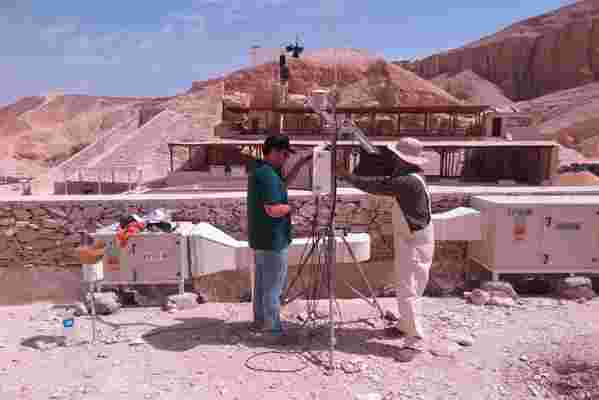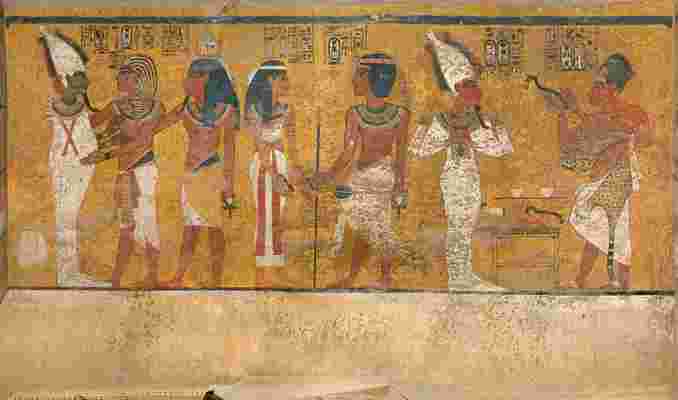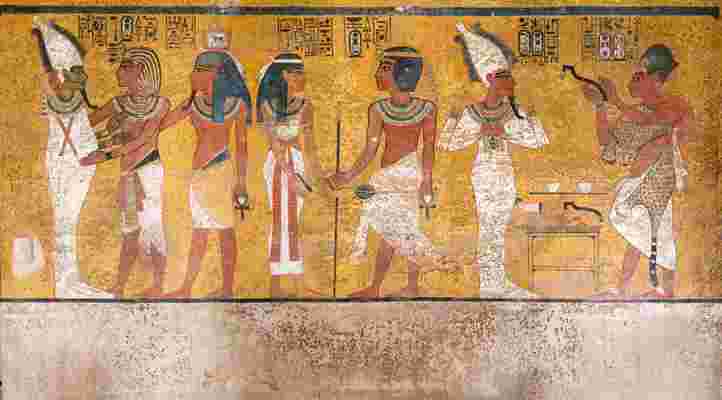November 15,2022
The Restoration of King Tut's 3,000-Year-Old Tomb Is Finally Complete
by David Stewart
When British archaeologist and Egyptologist Howard Carter discovered King Tutankhamen's tomb in 1922, the world erupted into frenzied excitement. For the first time in history, a burial chamber was discovered with all of its treasures intact, spared from looting by greedy thieves. Over the course of the next decade, the fascination mounted with every object carried out from the tomb, each treasure commanding its own headline. Today the tomb contains just a few objects, among them a quartzite sarcophagus, the gilded wooden outermost sarcophagus, and, of course, King Tut's mummy himself.

Environmental monitoring outside the Tomb of Tutankhamen.
As one of the most important archaeological discoveries in human history, King Tut's tomb quickly became a popular tourist destination. But with its narrow passages and cramped chambers, the Boy King's burial place was structurally unfit to properly accommodate its newfound spotlight. Between the throngs of visitors descending upon the Valley of the Kings , bringing with them harmful dust particles on their shoes and clothes, coupled with film crews and their bulbous array of equipment, the delicate wall paintings that depict King Tut's life and death were in dire need of intervention. Before Carter and his crew inadvertently discovered the steps that would lead them to their career-defining discovery, the tomb had been sealed for over 3,000 years, and the influx of oxygen and carbon dioxide from a heavy flow of human traffic was an assault on the atmosphere. In the nearly 100 years since the tomb was first opened, mysterious brown microbial spots had grown on the room's surfaces, and were threatening the magnificent paintings on the walls.
To counteract the damage done through the years and protect the tomb for future generations to come, the Getty Conservation Institute orchestrated a multiyear renovation and conservation project in conjunction with Egypt's Ministry of Antiquities. "Objects that we get out of that site are only as useful to us as the context that we have recorded them having been found in,” says Egyptologist Kent Weeks, who worked on the project. “[They’re] only useful to us if we have recorded, cleaned, and conserved them in a way that future generations can study them and restudy them.”

Wall painting in Tut's tomb, before conservation, February 2009. The north wall of the burial chamber depicts three separate scenes, ordered from right to left. In the first, Ay, Tutankhamen’s successor, performs the “opening of the mouth” ceremony on Tutankhamen, who is depicted as Osiris, lord of the underworld. In the middle scene, Tutankhamen, dressed in the costume of the living king, is welcomed into the realm of the gods by the goddess Nut. On the left, Tutankhamen, followed by his ka (spirit twin), is embraced by Osiris.

The north wall of the burial chamber depicts three separate scenes, ordered from right to left. In the first, Ay, Tutankhamen’s successor, performs the “opening of the mouth” ceremony on Tutankhamen, who is depicted as Osiris, lord of the underworld. In the middle scene, Tutankhamen, dressed in the costume of the living king, is welcomed into the realm of the gods by the goddess Nut. On the left, Tutankhamen, followed by his ka (spirit twin), is embraced by Osiris.
The project, which first began in 2009, focused primarily on stabilizing the wall paintings. The microbiological growths had embed themselves into the paint, and were therefore unable to be properly removed without inflicting damage to the works. But DNA test and chemical analysis revealed that the growths were dead and no longer a threat. Lorinda Wong, a project specialist with the Getty who specializes in wall paintings, called the growths unusual, and stated that this is the only known tomb where these growths have occurred.
In addition to treating the works, the team installed ventilation and filtration systems that limit the humidity and dust that enters with visitors, and updated the viewing platform at the entrance to the burial chamber so visitors could no longer touch the wall paintings. "The thing about conservation is that it has to be meticulous,” remarked Dr. Neville Agnew, the project director of the Getty Conservation Institute. “ It has to be precise; there is no room for sloppiness."






